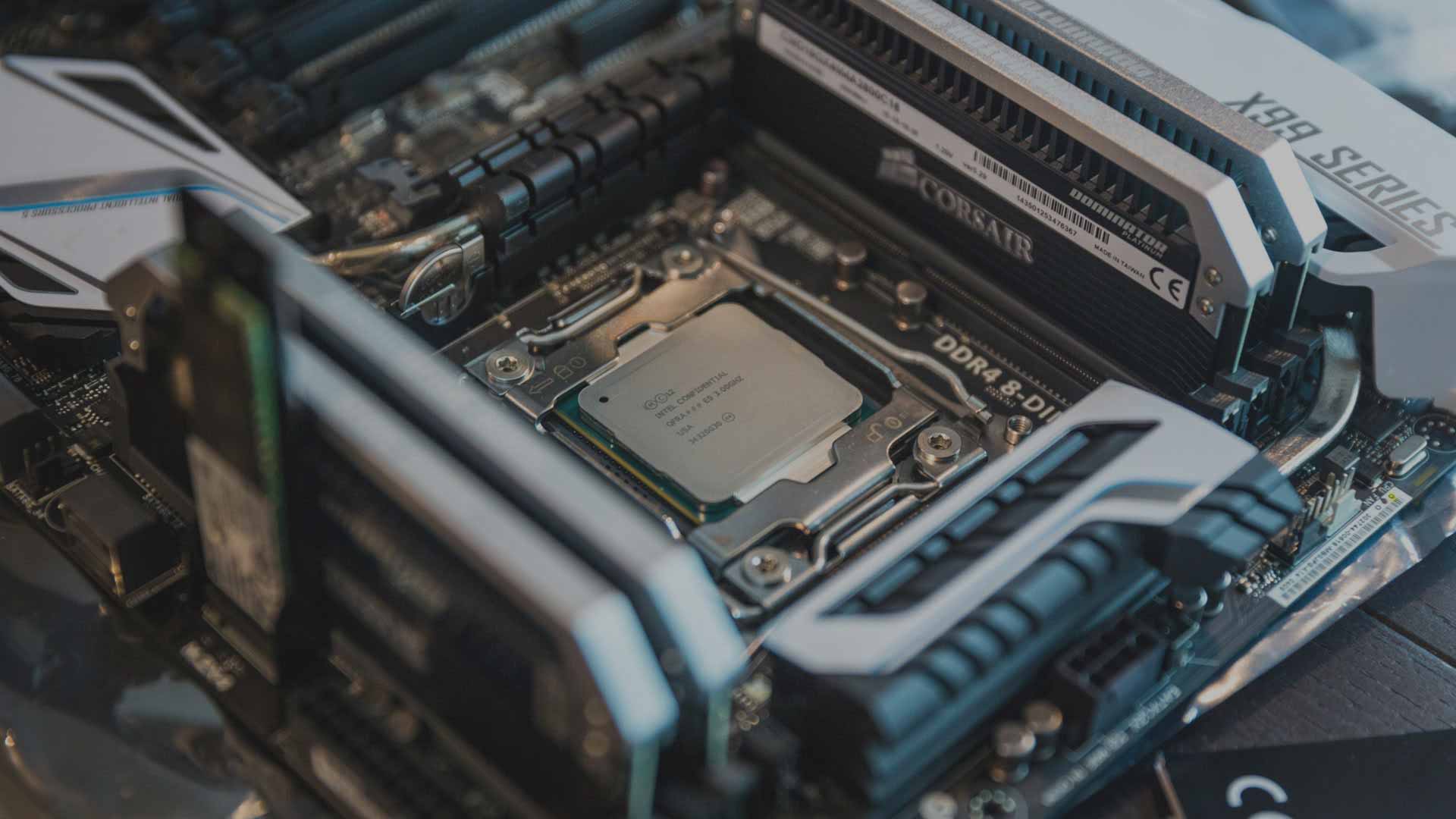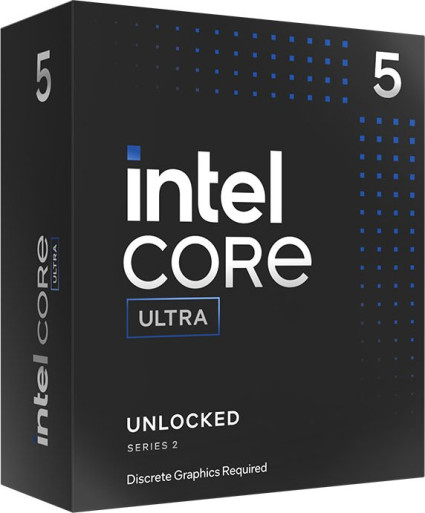
Intel Core Ultra 5 245KF vs. Intel Core Ultra 7 265KF
In diesem Vergleich von Intel Core Ultra 5 245KF versus Intel Core Ultra 7 265KF vergleichen wir die technischen Daten der beiden GPUs. Welche Grafikkarte ist schneller? Hier gibt es FPS & Benchmarks in Gaming und Anwendungen. Außerdem Daten zu Verbrauch, Effizienz (FPS pro Watt) und Preis-Leistung (FPS pro Euro).

Allgemeine Informationen
| Günstigster Preis |
|
|
| Serie | Intel Core Ultra 200 | Intel Core Ultra 200 |
| Chip-Architektur | Lion Cove (P-Core) + Skymont (E-Core) | Lion Cove (P-Core) + Skymont (E-Core) |
| Codename | Arrow Lake-S | Arrow Lake-S |
| Produktname | Intel Core Ultra 5 245KF | Intel Core Ultra 7 265KF |
Spezifikationen
Die Anzahl der Rechenkerne, die maximale Taktrate und die Größe des Cache können sich auf die Leistung in Spielen und Anwendungen auswirken. Mit 14 Kernen bietet der Intel Core Ultra 5 245KF deutlich weniger Kerne als der Intel Core Ultra 7 265KF mit 20 Rechenkernen. Der maximale Takt liegt beim Intel Core Ultra 5 245KF mit 5.20 GHz etwas niedriger als beim Intel Core Ultra 7 265KF mit 5.50 GHz. Der Cache ist beim Intel Core Ultra 5 245KF mit 26 MB L2-Cache + 24 MB L3-Cache zu 36 MB L2-Cache + 30 MB L3-Cache deutlich kleiner als beim Intel Core Ultra 7 265KF.
| Kerne (Gesamt) | 14 | 20 |
| Anzahl P-Cores | 6C | 8C |
| Anzahl E-Cores | 8c | 12c |
| Basis-Takt | 4.20 GHz | 3.90 GHz |
| Takt P-Cores | 4.20 GHz | 3.90 GHz |
| Takt E-Cores | 3.60 GHz | 3.30 GHz |
| Turbo-Takt | 5.20 GHz | 5.50 (Turbo Boost Max 3.0) GHz |
| Turbo P-Cores | 5.20 GHz | 5.50 (Turbo Boost Max 3.0) GHz |
| Turbo E-Cores | 4.60 GHz | 4.60 GHz |
| Gesamter L2-Cache | 26 MB | 36 MB |
| Gesamter L3-Cache | 24 MB | 30 MB |
| Fertigung | TSMC 3 nm | TSMC 3 nm |
| Rechenleistung | - | - |
| Leistungsaufnahme (TDP) | 125W (Processor Base Power) 159W (Maximum Turbo Power) |
125W (Processor Base Power) 250W (Maximum Turbo Power) |
Mainboard-Kompatibilität
Sowohl der Intel Core Ultra 5 245KF als auch der Intel Core Ultra 7 265KF setzen auf den Sockel Intel 1851.
| Sockel | Intel 1851 | Intel 1851 |
| Chipsatz-Eignung | Z890 | Z890 |
| PCIe-3.0-Lanes | - | - |
| PCIe-4.0-Lanes | - | - |
| PCIe-5.0-Lanes | 24x (verfügbar: 20) | 24x (verfügbar: 20) |
RAM-Kompatibilität
Während Sie beim Intel Core Ultra 5 245KF bis zu 192 GB vom Typ DDR5 im Dual Channel verbauen können, unterstützt der Intel Core Ultra 7 265KF bis zu 192 GB DDR5 Arbeitsspeicher.
| Speicher-Controller | DDR5 | DDR5 |
| Anzahl Speicherkanäle | Dual Channel | Dual Channel |
| max. Speichermenge | 192 GB | 192 GB |
| ECC-Unterstützung | - | - |
Grafik
| iGPU | - | - |
| iGPU-Modell | - | - |
| iGPU-Takt | - | - |
| iGPU-Einheiten | - | - |
| iGPU-Rechenleistung | - | - |
| iGPU-Architektur | Xe-LPG / Gen 12.7 | Xe-LPG / Gen 12.7 |
| iGPU-Interface | - | - |
| iGPU-Funktionen | - | - |
Sonstiges
| Freier Multiplikator | ✓ | ✓ |
| Stepping | B0, Spec Code: SRQCY | B0, Spec Code: SRQCU |
| Heatspreader-Kontaktmittel | - | - |
| Temparatur max. | 105°C (Tjunction) | 105°C (Tjunction) |
| Fernwartung | - | - |
| Einführung | 2024/Q4 (24.10.2024) | 2024/Q4 (24.10.2024) |
| Herstellergarantie | 3 Jahre bei Intel® Boxed-Prozessoren (Info DE/Info EN) | 3 Jahre bei Intel® Boxed-Prozessoren (Info DE/Info EN) |
CPU-Funktionen
| AES-NI | ✓ | ✓ |
| AVX | ✓ | ✓ |
| AVX2 | ✓ | ✓ |
| Boot Guard | ✓ | ✓ |
| CET | ✓ | ✓ |
| DL Boost | ✓ | ✓ |
| EIST | ✓ | ✓ |
| GNA 3.0 | - | - |
| Idle States | ✓ | ✓ |
| Instruction Set | ✓ | ✓ |
| ISM | ✓ | ✓ |
| MBEC | ✓ | ✓ |
| Optane Memory Support | - | - |
| OS Guard | ✓ | ✓ |
| Secure Key | ✓ | ✓ |
| Speed Shift | ✓ | ✓ |
| SSE4.1 | ✓ | ✓ |
| SSE4.2 | ✓ | ✓ |
| Thermal Monitoring | ✓ | ✓ |
| VMD | ✓ | ✓ |
| VT-d | ✓ | ✓ |
| VT-x | ✓ | ✓ |
| VT-x EPT | ✓ | ✓ |
| XD Bit | ✓ | ✓ |
Spiele

- Intel Core Ultra 7 265KFAVG108.06 %1%107.13 %
- Intel Core Ultra 5 245KFAVG100.00 %1%100.00 %

- Intel Core Ultra 5 245KFAVG188.9 FPS1%154.8 FPS
- Intel Core Ultra 7 265KFAVG252.9 FPS1%216.9 FPS

- Intel Core Ultra 5 245KFAVG554.7 FPS1%289 FPS
- Intel Core Ultra 7 265KFAVG608.4 FPS1%291.6 FPS

- Intel Core Ultra 5 245KFAVG174.7 FPS1%115.3 FPS
- Intel Core Ultra 7 265KFAVG182.3 FPS1%130.9 FPS

- Intel Core Ultra 5 245KFAVG205.3 FPS1%140.7 FPS
- Intel Core Ultra 7 265KFAVG212.4 FPS1%144.3 FPS

- Intel Core Ultra 5 245KFAVG148.7 FPS1%123.7 FPS
- Intel Core Ultra 7 265KFAVG141.9 FPS1%106.3 FPS

- Intel Core Ultra 5 245KFAVG230 FPS1%156 FPS
- Intel Core Ultra 7 265KFAVG252.8 FPS1%174 FPS

- Intel Core Ultra 5 245KFAVG88.2 FPS1%65 FPS
- Intel Core Ultra 7 265KFAVG95.1 FPS1%67.6 FPS

- Intel Core Ultra 5 245KFAVG266.1 FPS1%151.8 FPS
- Intel Core Ultra 7 265KFAVG266 FPS1%149.5 FPS

- Intel Core Ultra 7 265KFAVG0.80 FPSIntel Core Ultra 5 245KFAVG0.91 FPS

- Intel Core Ultra 7 265KFAVG3.24 FPSIntel Core Ultra 5 245KFAVG2.88 FPS
Produktivität
Produktivität

- Intel Core Ultra 7 265KFAVG116.82 %Intel Core Ultra 5 245KFAVG100.00 %

- Intel Core Ultra 7 265KFPKT144932 PunkteIntel Core Ultra 5 245KFPKT131342 Punkte

- Intel Core Ultra 7 265KFPKT1446 PunkteIntel Core Ultra 5 245KFPKT1391 Punkte

- Intel Core Ultra 7 265KFPKT1005 PunkteIntel Core Ultra 5 245KFPKT949 Punkte

- Intel Core Ultra 7 265KFSEK161 SekundenIntel Core Ultra 5 245KFSEK234 Sekunden

- Intel Core Ultra 7 265KFPKT1942 PunkteIntel Core Ultra 5 245KFPKT1334 Punkte

- Intel Core Ultra 7 265KFPKT3184 PunkteIntel Core Ultra 5 245KFPKT2952 Punkte

- Intel Core Ultra 7 265KFPKT21134 PunkteIntel Core Ultra 5 245KFPKT17950 Punkte

- Intel Core Ultra 7 265KFSEK47 SekundenIntel Core Ultra 5 245KFSEK60 Sekunden




